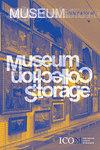如何在移动藏品时对其进行重组:实现搬迁规划和虚拟重组的计算机工具
IF 0.4
4区 艺术学
0 ART
引用次数: 0
摘要
博物馆藏品的搬迁涉及许多挑战,但也为广泛的重组提供了独特的机会,这进一步使任务复杂化。移动和重组的常见方法往往是经验的、线性的和粗粒度的。这限制了它们对规划长期和详细的设施移动的有用性。然而,从空间估计、存储设计、重组和搬迁等问题都指向一个统一的解决方案。我们的建议是一个定制的计算机工具,旨在描述,分析和虚拟操作整个存储设置。目前在Excel Visual Basic for Applications (VBA)中实现,日内瓦民族博物馆(MEG)的工作人员在搬迁前几个月就计划将藏品(75,000件物品)精确地整合到新的存储家具中,适应沿途的新限制,并最终在搬迁时重新组织藏品。一个简单的可视化界面以一种相关的方式呈现数据,而分析功能有助于决策。探索了多种存储场景,以适应预先安装的家具。仓库可以提前准备好,优化移动时间和预算。在迁移前后收集的数据表明,在一些地区,虚拟重组提供了多达一半的最终可用存储高度(+43.2米)。此外,分散的小多余空间可以在需要时重新组合和分配。通过新家具获得的有用的存储空间被策略性地放置。尽管它是在特定的环境中发展的,但我们的解决方案的通用性使其与其他机构和其他目的相关并可转置,并指出了更集成的收集管理视图。本文章由计算机程序翻译,如有差异,请以英文原文为准。
How to Reorganise a Collection While Moving It: Implementing Computer Tools for Relocation Planning and Virtual Reorganisation
Abstract Relocating museum collections involves many challenges, but also provides a unique opportunity for extensive reorganisation, which further complicate the task. Common approaches to both moving and reorganising tend to be empirical, linear and coarse-grained. This limits their usefulness for planning long-term and detailed facility moves. However, issues ranging from space estimation, storage design, reorganisation and relocation all point to a unified solution. Our proposal is a custom computer tool that aims to describe, analyse and virtually manipulate an entire storage setting. With its current implementation in Excel Visual Basic for Applications (VBA), staff at the Ethnographic Museum of Geneva (MEG) planned the exact physical integration of the collection (75,000 objects) into the new storage furniture, months ahead of the move, adapting to new constraints along the way, and eventually reorganising the collection while moving it. A simple visualisation interface presents the data in a relatable way, while analysis functions help with decisions. Multiple storage scenarios were explored to fit pre-installed furniture. Storage bays could be prepared in advance, optimising move time and budget. Data collected before and after the move shows that, in some areas, virtual reorganisation provided up to half of the final available usable storage height (+43.2 m). Moreover, small scattered excess spaces could be regrouped and allocated where required. Useful storage space acquired through new furniture was strategically placed. Although it evolved in a specific context, the generality of our solution makes it relevant and transposable to other institutions and other purposes, and points to a more integrated view of collection management.
求助全文
通过发布文献求助,成功后即可免费获取论文全文。
去求助
来源期刊

MUSEUM INTERNATIONAL
ART-
CiteScore
0.60
自引率
0.00%
发文量
0
期刊介绍:
In its new revised form Museum International is a forum for intellectually rigorous discussion of the ethics and practices of museums and heritage organizations. The journal aims to foster dialogue between research in the social sciences and political decision-making in a changing cultural environment. International in scope and cross-disciplinary in approach Museum International brings social-scientific information and methodology to debates around museums and heritage, and offers recommendations on national and international cultural policies.
 求助内容:
求助内容: 应助结果提醒方式:
应助结果提醒方式:


